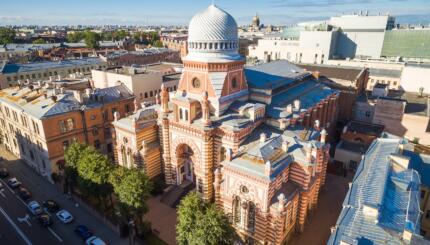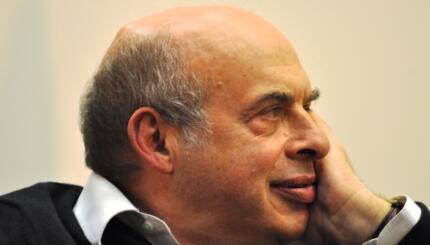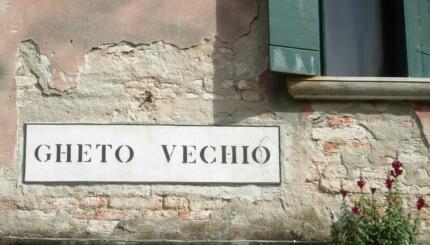Organization of the Bund
The idea that Jews in general and Jewish workers in particular had their own special interests and were therefore in need of a separate organization to achieve their aims, spread rapidly among the active members of Jewish workers’ movement. After various deliberations, representatives of Jewish socialist circles met in Vilna in October 1897 and founded the General Union of Jewish Workers in Lithuania, Poland, and Russia, known in Yiddish as Der Bund.
The Bund did not regard itself solely as a political party and devoted a considerable part of its activity to the trade-union struggle of the workers. It also drew its main strength from the trade unions established in the various branches. It therefore did not define its organizational nature in a clear cut fashion. Its political program, as formulated at the first gathering, regarded war on tsarist autocracy as the main objective.
The Bund did not consider itself a separate party, but rather part of Russian social democracy, which was maintained in the form of scattered groups and associations. Because of its relative strength, the Bund played an important part in the establishment of the All-Russian Social Democratic Party in March 1898. It is no coincidence that the first conference of this party was convened in Minsk, a Pale of Settlement town in which the Bund operated, and the latter placed an illegal printing press at the disposal of the party. It was agreed upon at the conference that the Bund would enter the party as an autonomous organization, independent on all questions relating to the Jewish working class.
The fact that the police succeeded in arresting a central committee of the new party and a majority of the Bund “activists” shortly after the conference did not affect the activities of the Bund: its influence spread rapidly among Jewish workers. It increased particularly after one of its members, Hirsch Lekert, made an attempt upon the life of the Vilna provincial governor, who had ordered the whipping of Jewish workers for participation in the 1902 May Day demonstrations. Lekert was executed and became the martyr of the movement. Although the Bund was basically opposed to individual terror as a weapon in the political struggle–in accordance with Marxist theory–Bundists leaders endeavored to justify Lekert’s action because of the widespread public response.

Help us keep Jewish knowledge accessible to millions of people around the world.
Your donation to My Jewish Learning fuels endless journeys of Jewish discovery. With your help, My Jewish Learning can continue to provide nonstop opportunities for learning, connection and growth.
National Development of the Bund
The first conference of the Russian Social Democrats proclaimed as part of its program the right of every nation to self-determination, but the Bund, in its early days, did not submit any particular Jewish national demand, with the exception of civil equality. At the third conference, held in Kovno in December 1899, the view was voiced that “national rights,” i.e., rights as a group, not only as individuals, should be demanded for the Jews, but this was rejected by most of the participants.
The fourth conference of the Bund (Bialystok, May 1901) was, for many reasons, a milestone in its development. It decided on the intensification of the political struggle, as separate from the economic struggle. But the main turning point was the national question. The conference decided to demand the transformation of Russia into a “federation of nations, each of them complete with complete national autonomy, independent of the territory on which it resides. The conference recognizes the term ‘nation’ also applied to the Jewish people.” But, taking into consideration the conditions prevailing in Russia, the conference did not demand this national autonomy immediately in order to avoid “obscuring the class consciousness of the proletariat.” A resolution was also passed condemning Zionism.
When one of the leaders of the Bund, V. Kossovski, published a pamphlet calling for the organization of the Russian Socialist Democratic Party as a federation of national parties, this idea encountered the vigorous opposition of the main section in this party, which formed around the journal Iskra. At the second congress of the Russian Social Democrats, held in summer 1903, the Bund demanded that its autonomous status be recognized as the “sole representative of the Jewish proletariat.” This met with the opposition of the majority, which rejected the federative principles in party organization. The main opponents of the Bund in this matter were the Jewish Social Democrats such a Martoc, Trotsky, and others. (Out of forty-five delegates to the conference, twenty-five were Jewish, including five representatives from the Bund.) The Bund announced its secession from the party, and subsequently, there was increased friction between them and the Social Democrats because of their parallel activities in the Pale of Settlement.
The political activities of the Bund grew in scope and its influence over the Jewish public increased after it began organizing self-defense units in the period of the 1903-1907 pogroms. It played an active part in the 1905 revolution, and at that time the number of its members had reached 35,000. The fourth congress of the Russian Social Democrats agreed to approve the autonomous status of the Bund and to refrain from deciding on the question of the national program. On the basis of this decision, the seventh conference of the Bund (Leipzig, 1906) decided to return to the ranks of the party.
With the onset of political reaction, there was considerable decrease in the activity of the Bund, as of all other revolutionary parties. Some of its active members migrated to the United States, and others devoted themselves to the cultural activity in Yiddish. The eighth conference of the Bund (Lvov, 1910) called for a struggle for the rights of Yiddish as the language of the Jews even before the attainment of national autonomy. It also decided to participate in communal life as part of it struggle for secularization. The regime was called to grant the population the right to choose their own day of rest (Friday for Moslems, Saturday for Jews, Sunday for Christians). In 1912 the Bund was among the initiators for convening various sections of the Russian Social Democrats against the policy of Bolsheviks, who had declared their faction to constitute the entire party. This gathering, which was held in Vienna in August, recognized the principle of “cultural national autonomy” for which the Bund had been fighting for ten years and declared that it did not contradict the principles of the party. This was the first recognition by a large section of the Russian Social Democrats of a fundamental clause in the Bund program.
Reprinted with permission from A History of the Jewish People, edited by H.H. Ben-Sasson and published by Dvir Publishing House.


